Art Beyond the Grave: Preserving Belize’s Ancient Artifacts
Last week, we told you about the incredible find at the Caracol Archaeological Site, where researchers believe they’ve uncovered the tomb of an ancient ruler, possibly Caracol’s very first king. But it’s not just the tomb that’s making headlines. Surrounding it was a stunning collection of ancient art and jewelry, offering a rare glimpse into the lives and legacy of the Maya elite. In tonight’s Kolcha Tuesday, we take you inside the tomb and show you how experts are working to preserve these priceless treasures for generations to come. News Five’s Britney Gordon has the story.
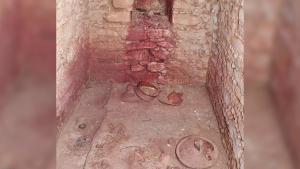 Britney Gordon, Reporting
Britney Gordon, Reporting
They say art speaks across time and deep in the jungles of Belize, it’s doing just that. Archeologists recently uncovered the tomb of an ancient Mayan ruler, and inside, they found more than bones. Dozens of intricately carved and painted artifacts were discovered, each one a masterpiece, crafted with care and fit for royalty. Rumaru Ku, an archaeologist with the Institute of Archaeology, says these pieces are powerful symbols of a civilization that continues to inspire.
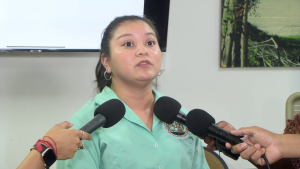
Rumaru Ku
Rumaru Ku, Archaeologist, Institute of Archeology
“This person who was actually found in there was of course one of the dynastic rulers. When it comes to that, he was not buried with common households. Items he was buried with very elite, very high-end material. So when it comes to ceramics, you usually find a lot of ceramics everywhere when it comes to sites. These ceramics are really important because not only are they painted, they’re polychrome, meaning that they have different designs on them, but they’re also formed in a way that they present something. So if you see the top of the lids for all of these pieces, they all represent an animal on them. So that itself just goes to show that they took time to make these types of potteries.”
You can tell just how valuable these ancient pieces are by the way they were made, from the materials used to the intricate carvings etched into every surface. Among the treasures found were several pairs of jade earpieces and beautifully detailed bone carvings, each one telling its own story. Right now, these priceless artifacts are being kept safe in a secure facility, where a dedicated team is working carefully to digitalize them, making sure they’re preserved and accessible for generations to come.
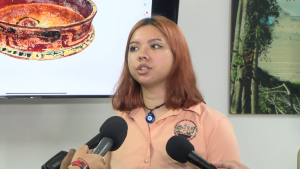
Katherine Coye
Katherine Coye, Research & Enforcement Officer, Institute of Archaeology
“But the reason we do this is because sometimes things happen. We live in a region that’s prone, not but we are prone to natural disasters. And because we don’t have maybe sometimes the best facilities that will properly protect these things from floods or hurricanes. One way we can perfectly preserve an artifact as it’s been found, is through digital photogrammetry. So the process of that is taking several pictures from every possible angle of the object, and the program basically stitches those together and it creates a nice little model in 3D space.”
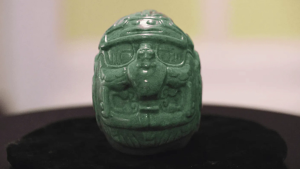 For the past two years, the Institute of Archaeology has been working behind the scenes to digitize Belize’s entire national collection. They’re making the country’s rich history accessible to everyone, no matter where they are, preserving it for generations to come. Husband-and-wife archaeologists Allen and Diana Chase uncovered a tomb believed to belong to an ancient Mayan ruler, not far from another tomb found years ago. Ku says the added to the historical record and strengthened cultural ties with nearby communities, who see the artifacts as a powerful connection to their heritage.
For the past two years, the Institute of Archaeology has been working behind the scenes to digitize Belize’s entire national collection. They’re making the country’s rich history accessible to everyone, no matter where they are, preserving it for generations to come. Husband-and-wife archaeologists Allen and Diana Chase uncovered a tomb believed to belong to an ancient Mayan ruler, not far from another tomb found years ago. Ku says the added to the historical record and strengthened cultural ties with nearby communities, who see the artifacts as a powerful connection to their heritage.
Rumaru Ku
“Adding to lineage of Caracol really put a mark there because it gave us more attachments to outside territories from only Belize. We were able to find out that we were having communication with other countries outside, and that added on to, at least for me, it just showed that it, we can talk from all over. We’re not just a simple site. We can converse and have relations and connect f rom even outside our very own surroundings.”
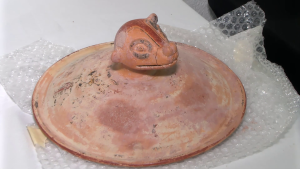 When we think of Belize’s rich history, iconic treasures like the Jade Head often come to mind. But now, there’s a whole new way to experience these national artifacts and you don’t even have to be in a museum to do it. Thanks to a major digitalization effort, every piece found in Belize, from ancient tools to royal jewelry, is being carefully scanned, restored, and catalogued. And here’s the exciting part: viewers can now explore these artifacts like never before, looking underneath, behind, and all around them. The Institute of Archaeology says it’s a game-changer for both public engagement and research.
When we think of Belize’s rich history, iconic treasures like the Jade Head often come to mind. But now, there’s a whole new way to experience these national artifacts and you don’t even have to be in a museum to do it. Thanks to a major digitalization effort, every piece found in Belize, from ancient tools to royal jewelry, is being carefully scanned, restored, and catalogued. And here’s the exciting part: viewers can now explore these artifacts like never before, looking underneath, behind, and all around them. The Institute of Archaeology says it’s a game-changer for both public engagement and research.
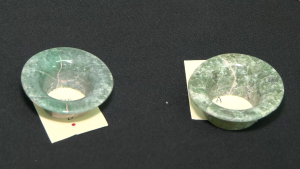 Katherine Coye
Katherine Coye
“Whether it’s just a tiny pot shard or if it’s a magnificent like jade mask. All of these things are considered a part of the national collection. However, some things cannot be manipulated in the way that we need to for photogrammetry. During my, I guess my live session with you guys, you saw that I was flipping it over and putting it down and spinning it. Some of these things, if you do that, they might just fall apart again. And we would really not, we wouldn’t wanna put them in a position to be more damaged. Because sometimes you can’t put things back exactly as they were.”
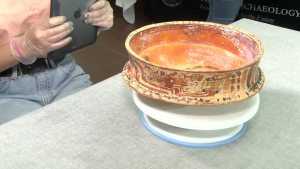 Context is everything in archeology, and these pieces are offering a backdrop to the story of Belize’s past. Coye says that offering a way for everyone to access that experience is crucial to the work that they do.
Context is everything in archeology, and these pieces are offering a backdrop to the story of Belize’s past. Coye says that offering a way for everyone to access that experience is crucial to the work that they do.
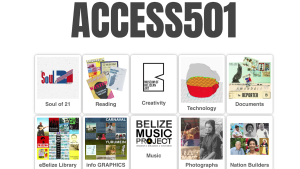 Katherine Coye
Katherine Coye
“ It’s great for students that would like to know more about artifacts because. During our work at the institute, we have noticed that sometimes people aren’t fully aware of the length and breadth of all the kinds of artifacts that are in Belize. So it’s really important for us to document as many things as we can and to be able to share those, especially with our Belizean students so that they can learn more about archeology. And demystify what’s happening in the Maya region.”
The National Collection is available on Ministry of Education’s Access 501 website, where anyone can view Belize’s ever-expanding collection and be inspired to connect with the communities that helped shaped Belize’s present-day culture. Britney Gordon for News Five.

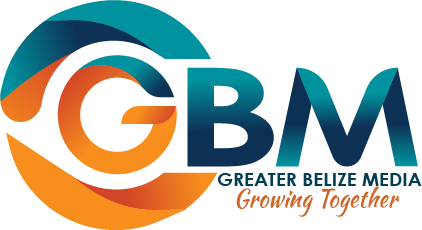


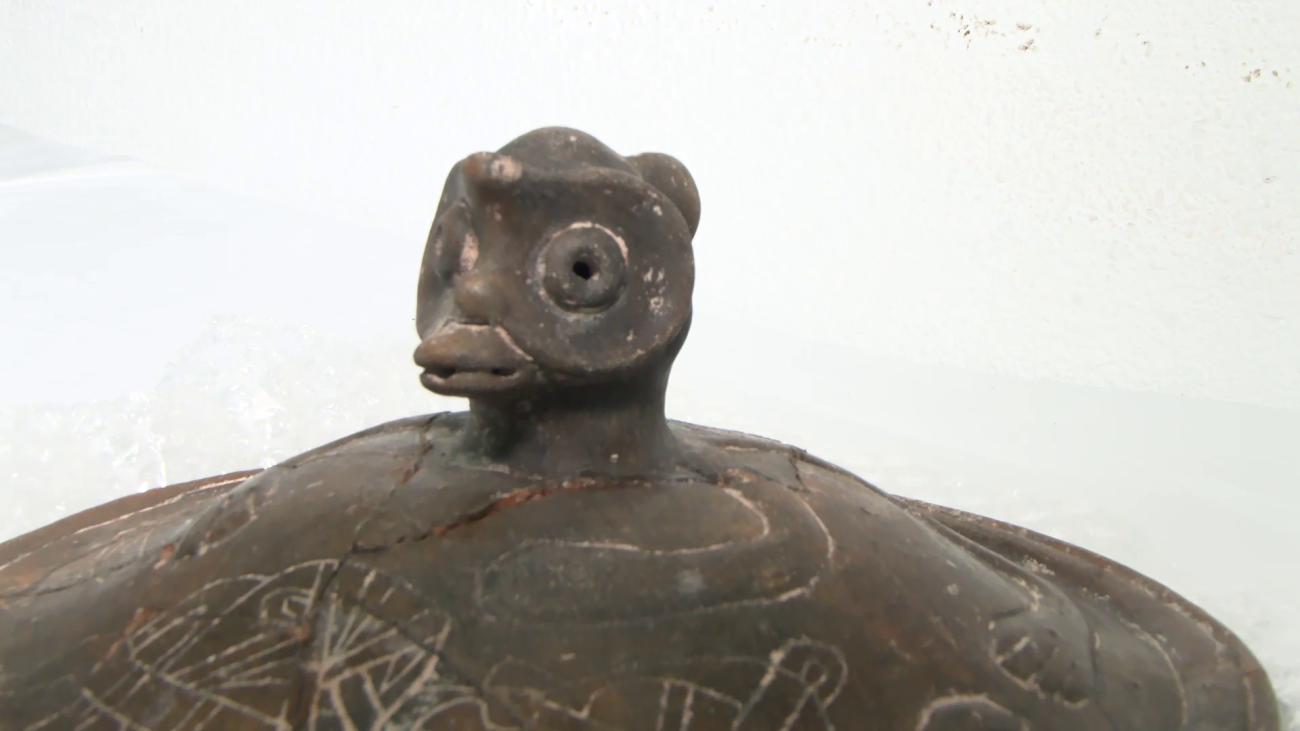

Facebook Comments